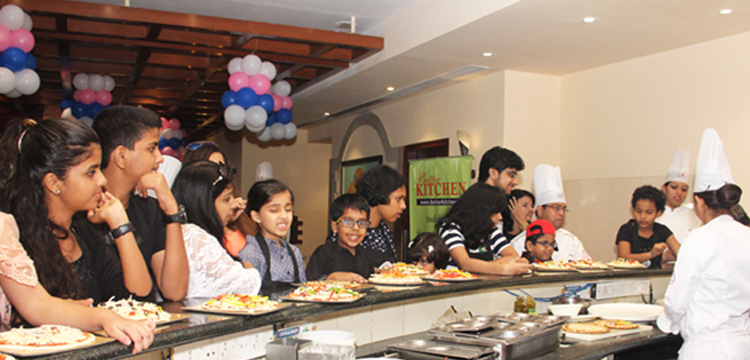
The current COVID -19 pandemic, which has affected lives and businesses globally, needs no introduction. Various governments, to contain spread of the deadly virus implemented strict but necessary safe distancing measures.
However, due to lockdown conditions, the majority of economy drivers like large, medium and small scale businesses, construction, tourism and service industries have come to a complete or partial standstill.
With guidelines for unlock 1 has come, commercial kitchens and restaurants are going to open soon. In restaurant industry the pre startup of the restaurant, care will need to be taken and meticulously checks will have to be carried out on all the systems before the restaurant can be opened for business. Special care should be taken for the sanitization of the kitchen and the food (Dry & Cold) storage areas.
With the lockdown all these areas would have been opened to visitors of the rodent family (rats).
What do rodent family bring?
They bring Weil’s disease (Leptospirosis) is a form of a bacterial infection also known as Leptospirosis that is carried by animals, most commonly in rats. Leptospirosis can infect almost any animal where it is harbored in the kidneys, but most commonly it is found in rats. It is one of the most widespread diseases spread from animals to humans in the world & it is most common in tropical and subtropical environments.
Foodborne disease is transmitted through saliva, urine, and droppings. In the course of one day's food rummaging, a rat can unload 50 half-inch droppings.
Bacterial infection that can be contracted from eating food contaminated by rat feces & dried rat urine which can lead to a bacterial zoonotic disease called leptospirosis, commonly known as Weil's syndrome.
Most people that are infected experience minor symptoms such as headaches, fever, vomiting, or diarrhea, while 1 in 10 infections can result in meningitis, liver failure, kidney damage in some cases, even death.
The accumulation of feces from mice and rats can spread bacteria, contaminate food sources and trigger allergic reactions in humans. Once the fecal matter becomes dry, it can be hazardous to those who breathe it in. Moreover, rodent droppings can spread diseases and viruses.

Things To Do
Survey the area and take precautions before you start & during clean-up of rodent-infested areas. Before you start cleaning,
Ensure to trap the rodents and seal up any entryways to ensure that no rodents can get in. Continue trapping for a week. If no rodents are captured, the active infestation has been eliminated and enough time has passed so that any infectious virus in the rodent’s urine/droppings or nesting material is no longer infectious.
Ensure that area is ventilated before starting clean-up of the space by opening doors and windows for at least 30 minutes to allow fresh air to enter the area. Use cross-ventilation and leave the area during the airing-out period.
Then start cleaning up any urine and droppings.
Ensure that when you begin cleaning, it is important that you do not stir up dust by weeping or vacuuming up droppings, urine or nesting materials.
Next, clean and disinfect the whole area
Lastly, remove gloves, and thoroughly wash hands with soap and water (or use a waterless alcohol-based hand rub when soap is not available and hands are not visibly soiled).
Storage Areas
When cleaning storage areas wear rubber, latex, or vinyl gloves when cleaning up urine, droppings, or nesting materials. Wear a respiratory protection Mask.
Note: A dust mask may provide some protection against dust, molds, and insulation fibre’s, but does not protect against viruses.
Spray any urine, droppings and nesting materials with either a bleach and water solution (1 part bleach to 9 parts water) or a household disinfectant prepared according to the label instructions for dilution and disinfection time. Soak well. This will inactivate any virus. Use a paper towel or rag to pick up the materials and dispose of them.
Mop floors after spraying them using bleach/water solution or a disinfectant. Dirt floors can be sprayed with either bleach and water solution or a disinfectant.
If exposed insulation has become contaminated with urine and droppings, it should be placed into plastic bags for removal.
To remove any potentially contaminated materials from storage vessels/boxes:
Dispose of any cardboard boxes contaminated with urine or droppings. Plastic, glass, or metal containers can be disinfected by spraying with the bleach and water solution or disinfectant. Then, using a rag or paper towel, wipe up the urine or droppings and dispose of the waste.
Clean countertops, cabinets, and drawers with disinfectant or bleach and water solution.
Decontaminate gloves with disinfectant or bleach and water solution. Wash hands well with soap and warm water.
Mandatory PPE
It is mandatory for Persons involved in the clean-up of heavy rodent infestations should wear the protective equipment listed here:
Personal protective gear should be decontaminated upon removal at the end of the day. All potentially infective waste material (including respirator filters) from clean-up operations that cannot be burned or deep-buried on site should be double-bagged in appropriate plastic bags. The bagged material should then be labelled as infectious (if it is to be transported) and disposed of in accordance with local requirements for infectious waste.
Air Ducts (heating and cooling ventilation systems)
When there is evidence that rodents have access to heating and cooling ventilation systems, it is best to contact a professional rodent exterminating service to remove them. Companies specializing in duct cleaning are familiar with the particular problems and risks associated with rodent infestation in ventilation systems.





Be the first one to post a comment